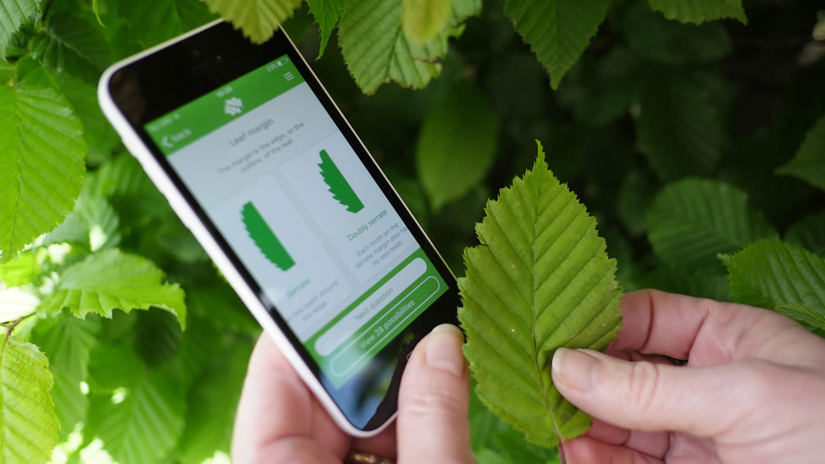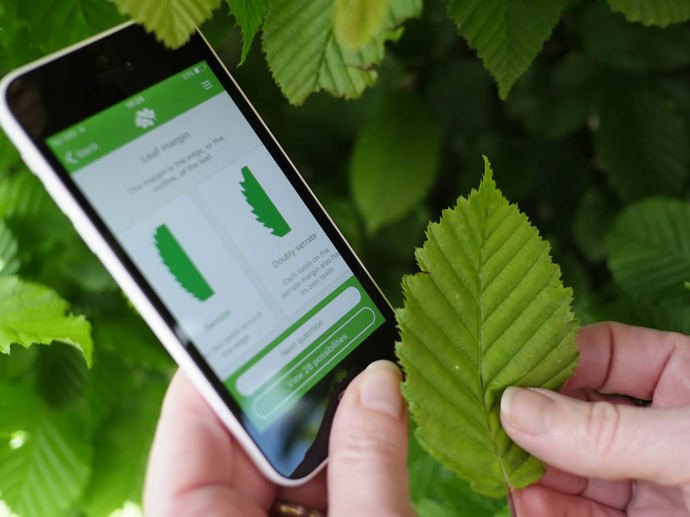Common names: purging buckthorn, common buckthorn, buckthorn
Scientific name: Rhamnus cathartica
Family: Rhamnaceae
Origin: native
Prickly and with the ability to purge. This plant’s common name harks back its use as a laxative. It’s a fierce, invasive species in North America.
Common names: purging buckthorn, common buckthorn, buckthorn
Scientific name: Rhamnus cathartica
Family: Rhamnaceae
Origin: native
Named after the laxative effects its berries induce when eaten, purging buckthorn is a small, spiny tree native to England and Wales and throughout Europe. Mature trees can grow to a height of 10m, with grey-brown bark and spiny branches. The leaf buds are conical and black-brown in colour, and form on long stalks.
Look out for: leaves which are opposite along the twig and have 3–5 pairs of curved veins that meet at the tip of the leaf.
Identified in winter by: the twigs, which have thorns. The buds, which have scales, are elongated and closely pressed to the twig. Peeling back the bark surface reveals orange bark underneath.

Credit: Nature Photographers Ltd / WTML
The glossy, dark green, toothed leaves turn yellow before falling in autumn.

Credit: Nature Photographers Ltd / WTML
Buckthorn is dioecious, meaning male and female flowers are found on different trees. Flowers are yellow-green with four petals, and are pollinated by insects.

Credit: Nature Photographers Ltd / WTML
After successful pollination, the female flowers develop into purple-black berries (drupes), 6–10mm in diameter. The seeds within the fruit are dispersed by birds.
Dogwood (Cornus sanguinea). Purging buckthorn is spiny whereas dogwood is not. It is also similar to alder buckthorn (Frangula alnus) but purging buckthorn has opposite leaves and alder buckthorn has alternate leaves.


Download our free Tree ID app for Android and iPhone to identify the UK's native and non-native trees. It's an A-Z tree guide in your pocket.
Buckthorn was introduced into North America as an ornamental landscaping plant, but has naturalised and become a problem in parts of Canada and the United States, as its dense growth crowds out native plants.
Purging buckthorn is native to Europe, northwest Africa and western Asia, from the central British Isles south to Morocco, and east to Kyrgyzstan.
In the UK, it is commonly found growing in scrub and woodland in England and southern Wales. It’s a hardy tree and grows well in most soils, in shade or sunlight.
Purging buckthorn is the main food plant of the brimstone butterfly whose caterpillars eat the leaves. Its flowers provide a source of pollen and nectar for bees and other insects, while its dense growth makes it a valuable nesting site for birds.

It was once used as a purgative (having a strongly laxative effect), which was thought to help rid the body of illness and disease.
Traditionally, the fruits and bark were used to make a yellow dye. The hard, dense wood is rarely used. As well as having a laxative effect, the berries are slightly poisonous and can irritate the skin, as can the bark.